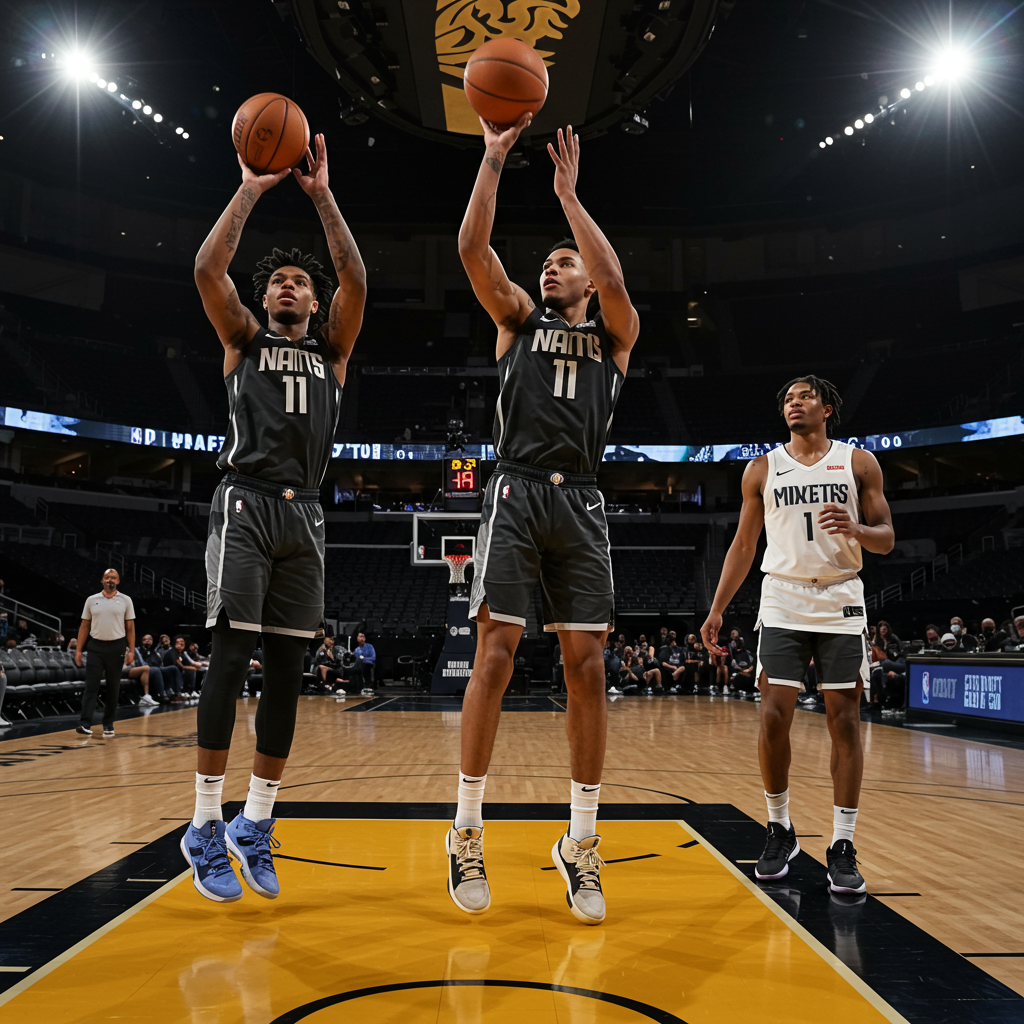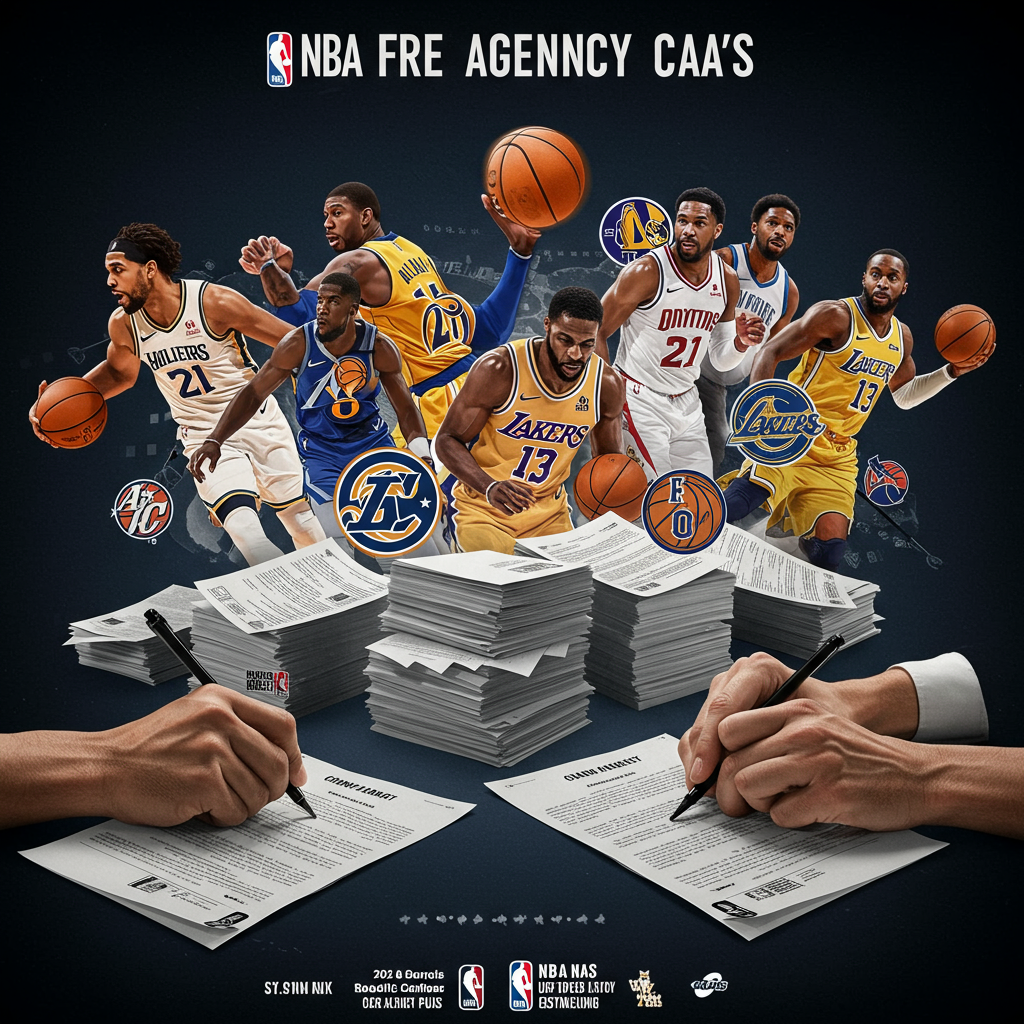In the modern NBA, shooting isn’t just a valuable skill; it’s arguably the most crucial one. Teams crave players who can space the floor, stretch defenses, and hit shots in a variety of ways. The 2025 NBA Draft class is no exception, featuring a host of prospects whose shooting prowess could make them highly sought-after assets. However, not all great shooters are built the same. They specialize, mastering different techniques that allow them to “bend the floor” for their offenses in unique ways.
This draft class showcases that diversity, highlighting players who excel in specific shooting facets – whether it’s pure catch-and-shoot efficiency, the art of shooting off movement, creating shots off the dribble, mastering the mid-range, or even big men extending their range beyond the arc. Understanding these different shooting archetypes is key to evaluating their potential impact at the next level.
Here are 10 prospects in the 2025 NBA Draft class who stand out for their shooting ability, each possessing a distinct skill set that could translate to NBA success:
Prospects Who Can Bend the Floor with Their Shot
Best Pure Shooter: Kon Knueppel, Duke Freshman Wing
Kon Knueppel possesses textbook shooting mechanics. His high, quick release requires minimal space, making him incredibly effective off the catch. Data from his freshman year at Duke supports this, showing him hitting 43.3% on standstill three-pointers and a solid 38.3% on movement threes. While developing a more consistent off-the-dribble game would elevate his ceiling, his foundational shooting technique is arguably the cleanest in the class.
Best Movement Shooter: Tre Johnson, Texas Freshman Guard
Drawing comparisons to the legendary Ray Allen by his own admission, Tre Johnson shines when shooting off screens. His fluid motion allows him to navigate picks and release quickly. As a freshman, he converted 40.8% of his catch-and-shoot threes, notably hitting over 50% when coming off screens. Johnson is also dangerous off the bounce, utilizing excellent footwork on step-backs and side-steps to hit 38.4% of his dribble-jumper threes. His balance and fearless approach make him a premier threat shooting on the move.
Best Midrange Maestro: Hunter Sallis, Wake Forest Senior Guard
While not yet a lights-out three-point shooter, Hunter Sallis is exceptional in the mid-range game. He converted an impressive 52.3% of his pull-up two-pointers. His success stems from a slippery handle, tight footwork, and elite body control that allows him to stop on a dime or flow seamlessly into shots. His refined touch on floaters further solidifies his status as the class’s top mid-range scorer.
Overcoming Size: Jase Richardson, Michigan State Freshman Guard
At just 6’0.5″, Jase Richardson compensates for his lack of height with polished scoring instincts, inherited perhaps from his NBA father. His mid-range repertoire includes stop-on-a-dime pull-ups, fadeaways, and soft floaters. He also proved effective off the catch, hitting 45.7% of his threes as a freshman. While creating separation against larger NBA defenders remains a key question, his innate scoring touch is a significant asset.
Trust the Mechanics: Liam McNeeley, UConn Freshman Wing
Liam McNeeley’s college shooting percentages (31.7% overall 3s, 36.7% catch-and-shoot) might not jump off the page, but his strong high school track record and clean underlying mechanics suggest future improvement. At 6’7″, he constantly works off-ball, navigating screens and relocating to stress defenses. His shooting motion and touch lead evaluators to trust his long-term potential over the freshman statistics.
Big Man Range: Maxime Raynaud, Stanford Senior Center
Standing 7’1″, Maxime Raynaud represents the modern stretch big. He averaged 5.5 three-point attempts per game, often in pick-and-pop situations, transition, or off screens, hitting 34.5% overall and 37.4% on catch-and-shoot attempts. His willingness to even attempt (though less successfully) off-the-dribble threes signals a commitment to developing his perimeter game, making him an intriguing big man prospect with legitimate range.
Specialist Threat: Koby Brea, Kentucky Senior Wing
Koby Brea projects as a potential second-round pick whose primary path to sticking in an NBA rotation is his shooting. Over five college seasons, he shot an excellent 43.4% from three on 4.9 attempts per game, demonstrating NBA range and a quick release. While not a primary ball-handler, he can hit side-steps against closeouts and occasional pull-ups, fitting the mold of a valuable specialist shooter.
Potential Power: Khaman Maluach, Duke Freshman Center
Khaman Maluach isn’t a proven three-point shooter yet, but several indicators point to potential development. His solid 76.6% free-throw percentage and high conversion rates on hook shots (57.1%) and layups (67.9%) in the half-court suggest promising touch. He’s consistently been a good free-throw shooter and takes occasional threes, fueling speculation that he could add a reliable deep shot, which would significantly alter his offensive profile.
Proving the Sample: Cedric Coward, Washington State Senior Wing
Cedric Coward’s 40% three-point shooting last season came on a limited sample (30 attempts in 6 games). However, this aligns with a broader trend: he shot 38.8% across three Division I seasons, including 40.6% on catch-and-shoot attempts. Effective as a spot-up threat with clean footwork off movement and good touch on mid-range pull-ups, his strong performance at the NBA Draft Combine further validated his shooting legitimacy despite the small recent sample size.
Best Clutch Performer: Walter Clayton, Florida Senior Guard
Walter Clayton showed a remarkable ability to hit crucial shots in high-pressure moments, particularly during Florida’s NCAA Tournament run. He delivered game-changing threes against opponents like UConn in clutch situations. Statistically, he hit 36.9% of pull-up threes and 39.8% of catch-and-shoot threes throughout the season, many coming in high-leverage spots. Despite being slightly undersized (6’2″) and older (22), his proven clutch shooting capability raises questions about whether teams might overlook his profile.
The Value of Shooting in the 2025 Class
The ability to shoot effectively remains a cornerstone of NBA success. These ten players represent just a glimpse into the shooting talent expected in the 2025 NBA Draft. Their diverse skill sets illustrate that whether a player is a pure marksman, a master of movement, or a big man stretching the floor, elite shooting in any form can be a game-changing attribute at the next level. As teams evaluate prospects, understanding these unique shooting profiles will be critical in identifying players who can truly “bend the floor” and elevate an offense.


